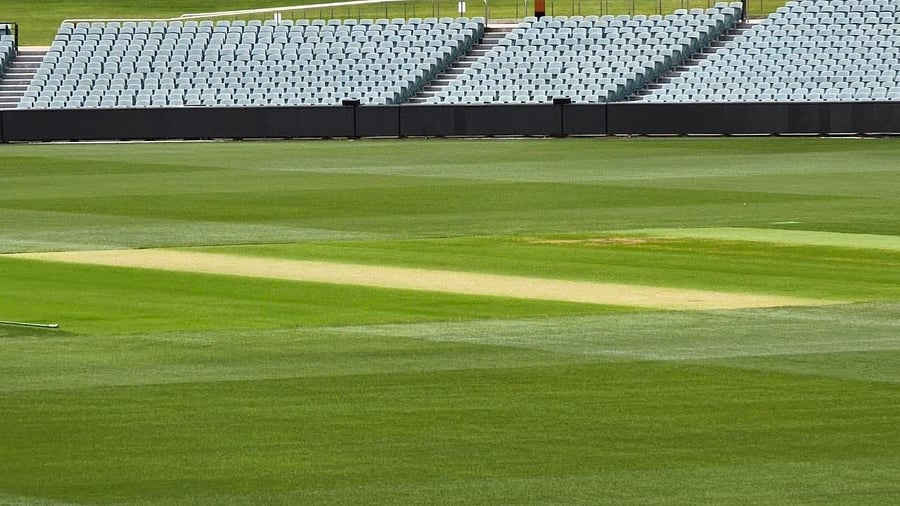
A total of 6 mm of grass is likely be left on the pitch for the Adelaide Test.
Credit: X/@jats72
Adelaide: A significant part of Friday's opening day play of the pink-ball Test between India and Australia is most likely to be affected by rain, according to the Adelaide Oval curator Damian Hough who is bracing for a 7 mm downpour with the first day of the day/night Test expected to witness the capacity crowd of over 50,000.
"Friday looks like it could be thunderstorms," he told the media on Wednesday.
"I'm not sure exactly on the timing of those storms coming through, but we're expecting to pull covers on Friday. Hopefully it clears out on Saturday morning, then it should be good for the remainder of the Test."
Hough said a total of 6 mm of grass will be left on the pitch for the Test which should see the pacers calling shots. But he also added that he was leaving more grass on the pitch in 2015 (when the first pink-ball Test was held) to protect the ball.
Hough noted that there hasn't been much difference in the preparation of pitches for pink-ball games.
"You adapt every year, you tweak things every year from our side, it's probably our height of cut during the off-season more than anything, more than during the year, there's just some finer details that we just try to do, just to try and keep improving."
From a curator's perspective, what is the ideal deck for a pink ball Test that varies from a red ball pitch?
"Again, everything tends to stay the same, so it's a coarse matted grass, even grass cover, good moisture, but dry and hard, so something where the quicks will get a bit out of it, spinners will be able to get some light turn and bounce, but also important for us to get some partnerships with the players and the batters to be able to play their shots."
Hough couldn't guarantee that the match will last five days even if the first day's play is going to be impacted by rain. "The players will dictate that. All we do is try to produce a pitch that provides an even contest between bat and ball. Both teams have elite bowlers, world-class bowlers. We've seen enough day-nighters to know that if you get a new ball under lights with two new batters in, then it can be very tricky. The teams obviously play that game and adapt and are quite tactical when they do that. If there's an opportunity to get the new ball under lights, it'll be tricky."